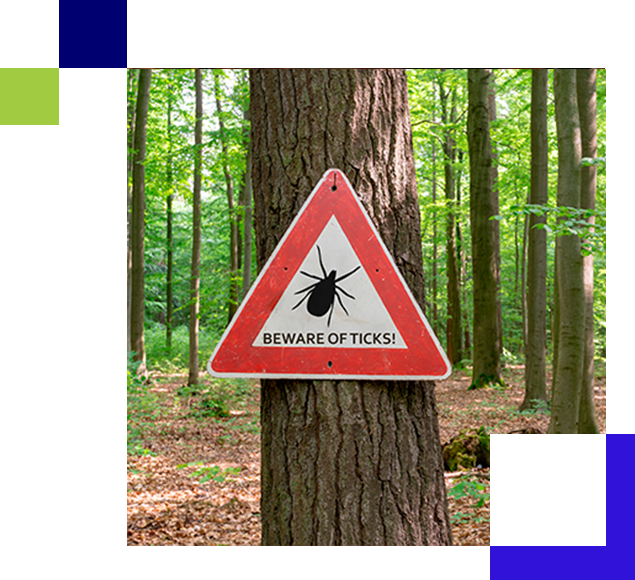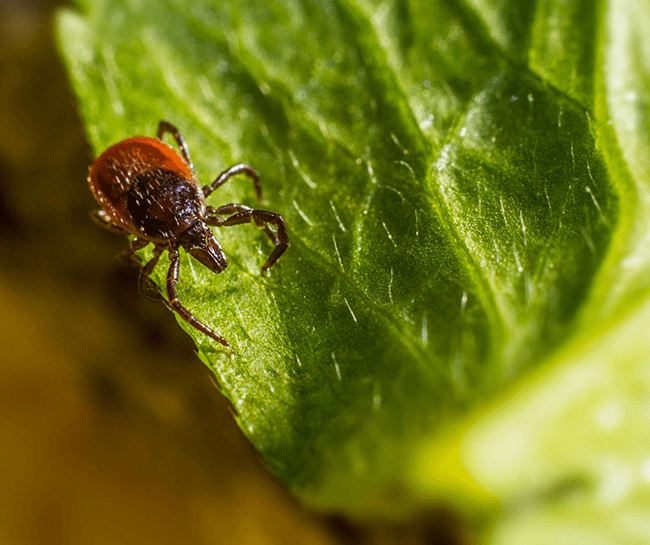Tick safety
The tick population in New York State is exploding. Each year, the volume and severity of tick-borne illnesses seem to increase. Tick bites are very common in New York. Often, these bites result in minor nuisance symptoms. Unfortunately, tick bites can also result in a fatal illness. CSEA is here to educate and protect you from the dangers of ticks.


Early and proper removal of ticks is key to your safety
There are approximately 30 species of ticks in New York. Of those, about 10 commonly bite people and only four species can cause a serious illness that can result in death.
Sadly, the three most common ticks in New York (Deer a.k.a. Black-legged Tick, the Dog Tick, and the Lone Star Tick) can carry bacteria or viruses that can cause a fatal illness. The less common Woodchuck (Groundhog Tick) can also cause a life-threatening illness.
Serious Illnesses Transmitted from Ticks

CSEA Ticks and Biting Insects Fact Sheet
Learn about lyme disease from this downloadable fact sheet, which includes information on the causes, symptoms, and how to protect yourself and your loved ones.


CDC: Tickborne Diseases of the U.S.
Visit the Centers for Disease Control and Prevention page on tickborne diseases to explore a reference manual for healthcare providers and continuing education resources.
Avoid Being Bitten
Employers should be spreading awareness, providing training, ensuring proper attire, and providing effective repellants. Tick bites are OSHA and PESH recordable incidents and must be recorded in the annual report of occupational injuries and illnesses.

- Know where to expect ticks. Ticks live in grassy, brushy, or wooded areas, or on animals.
- Use EPA-registered insect repellents containing DEET, picaridin, IR3535, oil of lemon eucalyptus, para-menthane-diol, or 2-undecanone.
- Treat clothing and gear, such as boots, pants, and socks products containing 0.5% permethrin.
- Check for ticks after outdoor activity, especially under the arms, in and around the ears, inside the belly button, behind the knees, between the legs, around the waist, and on the hairline and scalp.
- Keep ticks away from exposed skin by wearing long-sleeved shirts, long pants, with tight cuffs at the wrists and ankles.
- Tuck pants into socks or use double-sided tape.
- Wear light-colored clothing to be able to see ticks more easily.
Bite Back!
- Early and proper removal of ticks is known to reduce the probability of illness. For example, a Deer Tick requires almost 36 hours attachment for the bacteria that causes Lyme disease to take hold.
- Never squeeze or twist an attached tick; it can increase the transmission of harmful bacteria and viruses.
- Remove the tick with your CSEA Tick Key remover or use clean, fine-tipped tweezers to grasp the tick as close to its head and the skin’s surface as possible, then pull upward with steady, even pressure.
- Immediately clean and sanitize the skin and surrounding area of the bite.
- If possible, place the tick in an air-tight container with a little rubbing alcohol to kill it and save the tick if requested by a medical provider.
- If at work, document and report the bite immediately or within 30 days.
- Monitor the bite site for rash or infection.
- Monitor yourself for sudden onset fever and flu-like symptoms.
- Contact your medical provider immediately if symptoms progress.
- Contact a Workers’ Compensation attorney if you are bitten on the job and contract a tick-borne illness and require medical attention.

